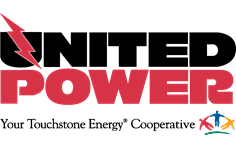/sites/default/files/styles/news_card_553x430_/public/news/Feb2020_NL_EEMyths.jpg?itok=vFFnVeSz
As a cooperative, United Power wants its members to know how they can use their energy more efficiently and save on their bills. There’s a stigma surrounding energy efficiency, though, that it’s either too hard or too expensive to implement in a home. Other members may be unintentionally using more energy from implementing some not-so-energy-efficient “savings” myths. In this article, we dive into a few of these energy efficiency myths to separate fact from fiction and help you make more energy efficient choices.
Electric Space Heaters Save Money
Some people have heard using an electric space heater to heat individual rooms in a house is more cost effective than running a heating system. In fact, electric space heaters are among the most energy inefficient appliances you can use in your home. A central heating system is more effective at heating your home. It’s best to use space heaters as supplemental heat for short periods of time only.
Myth or Truth: Myth
Closing Vents Reduces Consumption
It may seem logical that closing vents in a room would mean saving energy. You’re not heating an extra room in the house, after all. However, closing vents actually puts an added weight on your central heating system. Closed vents only redirect air and throw the system off balance, forcing it to work harder. An energy efficient alternative is investing in a smart thermostat that gives you more control of your system, especially when you’re away.
Myth or Truth: Myth
Try Blasting Your Thermostat
This idea stems from a misconception about how central heating and cooling systems work. Your thermostat is designed to keep a room at a steady temperature. When you crank it up or down, it does not heat or cool more quickly, but it will work continuously until it has reached the temperature setting. From then on, it will turn on or off as required to maintain the temperature setting. Because your home will continue to gain or lose heat through various escape points, this will cause your system to run more frequently and use more energy.
Myth or Truth: Myth
You Can Save with a Microwave
Cooking is not a large part of the average household’s electric bill. However, heavy use of an oven or stove can contribute to an increase in your bill, especially if you cook much during the summer. The heat produced by a stove or oven can cause your A/C to work harder to maintain the temperature in the room. By contrast, a microwave is quicker and uses less energy.
Myth or Truth: Truth
Using a Dishwasher is Better than Hand Washing
Most homes aren’t equipped with an electric water heater, so you might not think of how this could ultimately save you on energy efficiency. However, washing your dishes by hand requires a lot of hot water. Dishwashers actually use your hot water more efficiently, and many of them have energy efficient settings to help conserve gas, electricity and water.
Myth or Truth: Truth
Close Doors to Unused Rooms When Heating
If you’re like most people, you’ve probably heard energy efficiency points from both sides, but here’s the truth. Your heating system operates through a convection current. As air cycles into a room, hot air rises and sinks as it cools. The cool air is then reheated, beginning the cycle again. Keeping doors to unused rooms closed keeps this cycle of heated air within a contained space, which is more efficient than dispersing it throughout the house.
Myth or Truth: Truth
Becoming energy efficient doesn’t mean spending lots of money on the latest technology or struggling with strict rules. It’s about making small lifestyle changes or remembering to make a few changes around the house. It’s also about sifting the fact from the fiction. As your trusted energy provider, we’re here to provide you with the best resources to take control of your usage, become more energy efficient and save.
If you’re curious about more ways you can save, check out our Energy Tips or contact an Energy Management Specialist at 303-637-1300.

